- Bears the workshop stamp on the back.
-
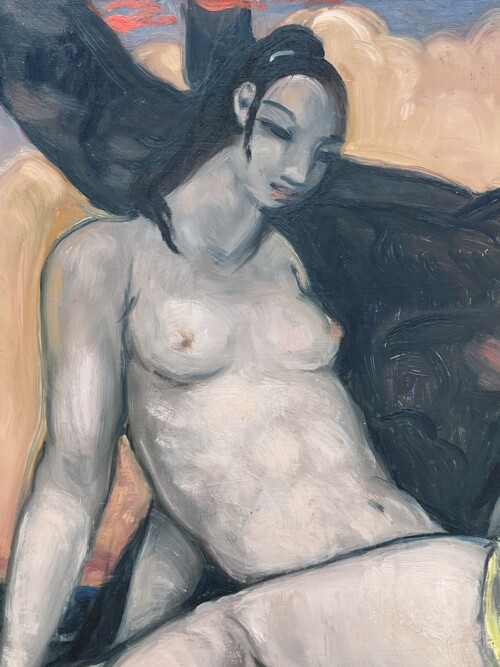
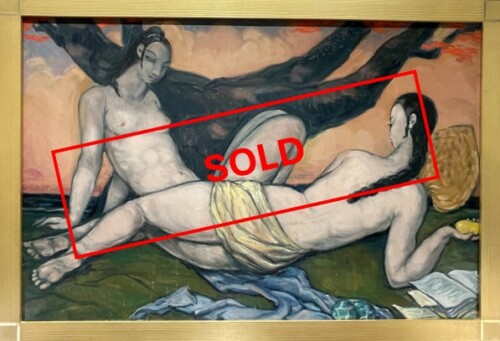 André Maire est l'un des plus célèbres « Peintres Voyageurs » français qui a beaucoup voyagé en Europe, en Afrique et en Extrême-Orient à partir de 1910, notamment en Inde, à Madagascar, au Cambodge et au Vietnam. Il a enseigné l'art de la peinture à Hanoï - Vietnam, etc. Les peintures à l'huile d'André Maire sont beaucoup plus rares que ses gouaches sur papier. • Porte le cachet de l'atelier au dos. Dimensions : H : 59 cm L : 90 cm (sans cadre) H : 62 cm L : 93 cm P : 2 cm (avec cadre) _________________________________ André Maire is one of the most famous French « Peintres Voyageurs » who travelled extensively in Europe, Africa and the Far East from 1910 in particular to India, Madagascar, Cambodgia and Vietnam. He taught the art of painting in Hanoï -Vietnam etc. Oil paintings by André Maire are a lot more scarce than his gouache on paper.
André Maire est l'un des plus célèbres « Peintres Voyageurs » français qui a beaucoup voyagé en Europe, en Afrique et en Extrême-Orient à partir de 1910, notamment en Inde, à Madagascar, au Cambodge et au Vietnam. Il a enseigné l'art de la peinture à Hanoï - Vietnam, etc. Les peintures à l'huile d'André Maire sont beaucoup plus rares que ses gouaches sur papier. • Porte le cachet de l'atelier au dos. Dimensions : H : 59 cm L : 90 cm (sans cadre) H : 62 cm L : 93 cm P : 2 cm (avec cadre) _________________________________ André Maire is one of the most famous French « Peintres Voyageurs » who travelled extensively in Europe, Africa and the Far East from 1910 in particular to India, Madagascar, Cambodgia and Vietnam. He taught the art of painting in Hanoï -Vietnam etc. Oil paintings by André Maire are a lot more scarce than his gouache on paper. -

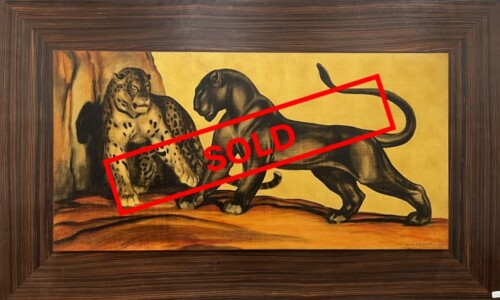 André Margat est un artiste français largement connu pour ses représentations d'animaux. Il est membre du « Groupe des Douze », une association d'artistes créée en 1932 dans le but de présenter l'art animalier français lors d'expositions et d'honorer un artiste chaque année. • Laque polychrome avec un fond doré. • Signé et daté « 1942 » en bas à droite. • Accompagné d'un cadre en ébène Macassar. Dimensions : H : 50 cm L : 100 cm (sans cadre) H : 80 cm L : 130 cm (avec cadre) Pour découvrir plus sur André Margat, cliquez ici
André Margat est un artiste français largement connu pour ses représentations d'animaux. Il est membre du « Groupe des Douze », une association d'artistes créée en 1932 dans le but de présenter l'art animalier français lors d'expositions et d'honorer un artiste chaque année. • Laque polychrome avec un fond doré. • Signé et daté « 1942 » en bas à droite. • Accompagné d'un cadre en ébène Macassar. Dimensions : H : 50 cm L : 100 cm (sans cadre) H : 80 cm L : 130 cm (avec cadre) Pour découvrir plus sur André Margat, cliquez ici
André Margat is a French artist widely known for his representations of animals. He is a member of the « Groupe des Douze », an association of artists created in 1932 with the aim of presenting French animal art in exhibitions and honoring an artist each year.- Polychrome lacquer with a gold background.
- Signed and dated « 1942 » at the bottom right.
- Accompanied by a Macassar ebony frame.
-
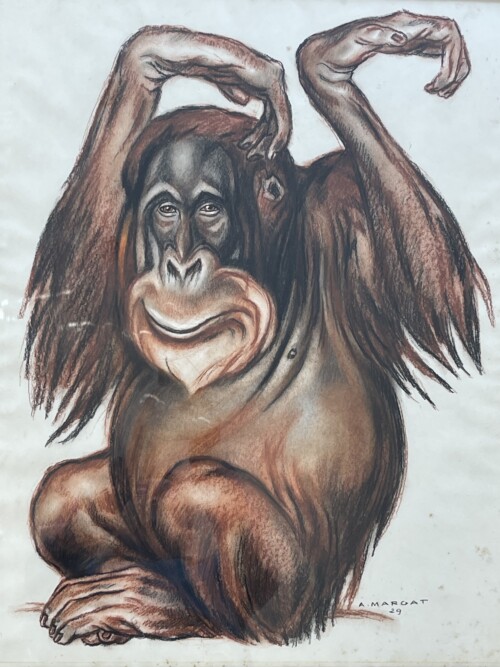
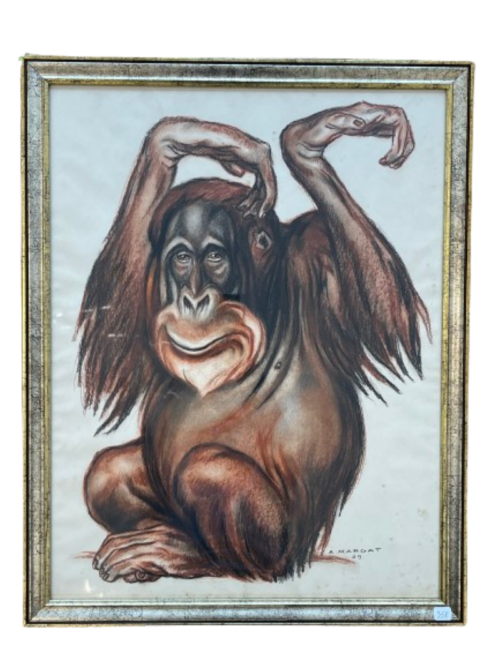 André Margat est un artiste français largement connu pour ses représentations d'animaux. Il est membre du « Groupe des Douze », une association d'artistes créée en 1932 dans le but de présenter l'art animalier français lors d'expositions et d'honorer un artiste chaque année.
André Margat est un artiste français largement connu pour ses représentations d'animaux. Il est membre du « Groupe des Douze », une association d'artistes créée en 1932 dans le but de présenter l'art animalier français lors d'expositions et d'honorer un artiste chaque année.- Dessin au pastel.
- Signé en bas à droite et daté (19)29.
- Drawing in pastel.
- Signed at lower right and dated (19)29.
-
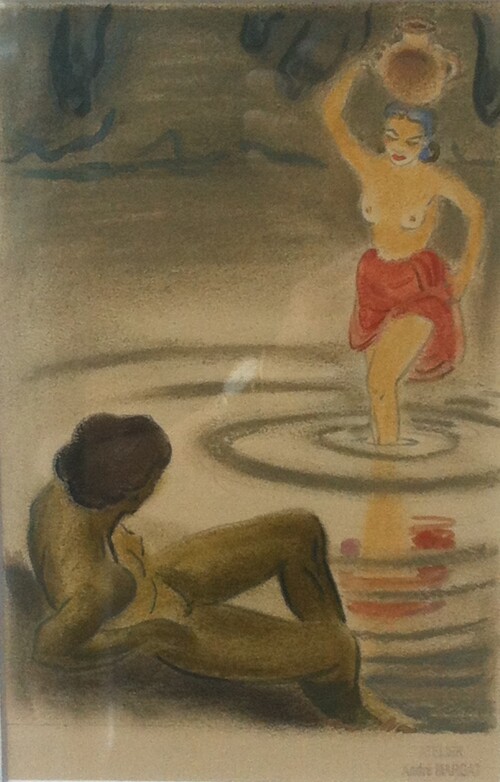
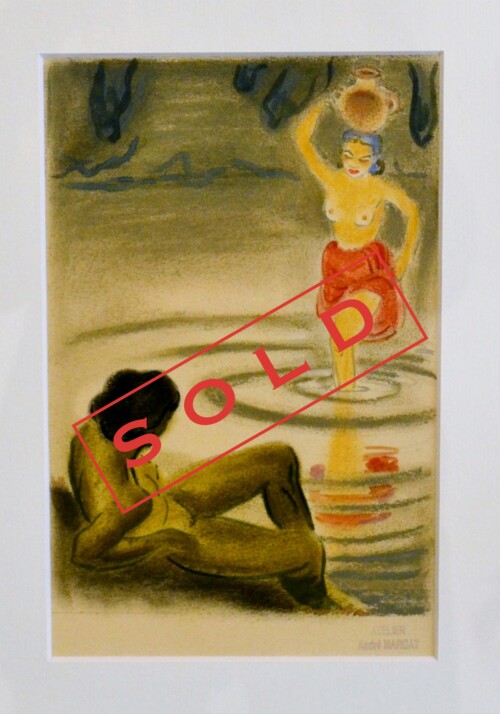 André MARGAT (1903-1997) Pastel aquarellé représentant une femme remplissant des cruches d'eau H : 16,5 cm ; L : 24,5 cm Pour plus d'informations sur le créateur, cliquer sur le nom : André MARGAT
André MARGAT (1903-1997) Pastel aquarellé représentant une femme remplissant des cruches d'eau H : 16,5 cm ; L : 24,5 cm Pour plus d'informations sur le créateur, cliquer sur le nom : André MARGAT
A pastel by André Margat, 1940-1950s.Pastel watercolor of a woman filling water jugs
Dimensions : -
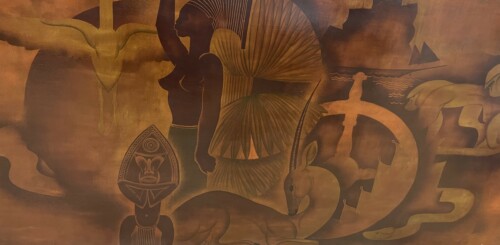
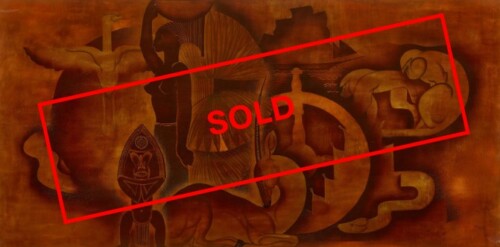 Exploration de l'Afrique.
Exploration de l'Afrique.- Laque sur panneau.
- Circa 1940.
- Signé en bas à droite.
- Laquer on board.
- Circa 1940.
- Signed in the bottom right corner.
-
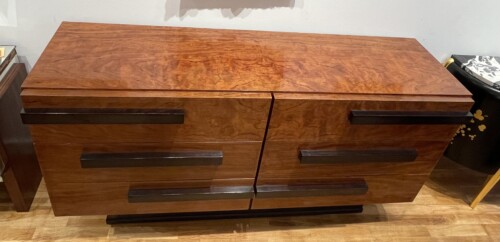
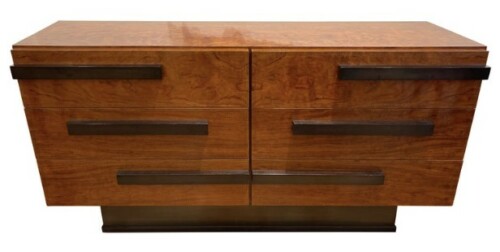
- Vers 1932.
- Rare commode en bois de placage verni.
- Base et poignées en bois laqué noir avec clouage en laiton doré.
- Six tiroirs.
- Trace de signature sur la base.
- Circa 1932.
- Varnished plywood chest of drawers.
- Black lacquered wood base and handles with gilded brass nailing.
- Six drawers.
- Trace of signature on the base.
-
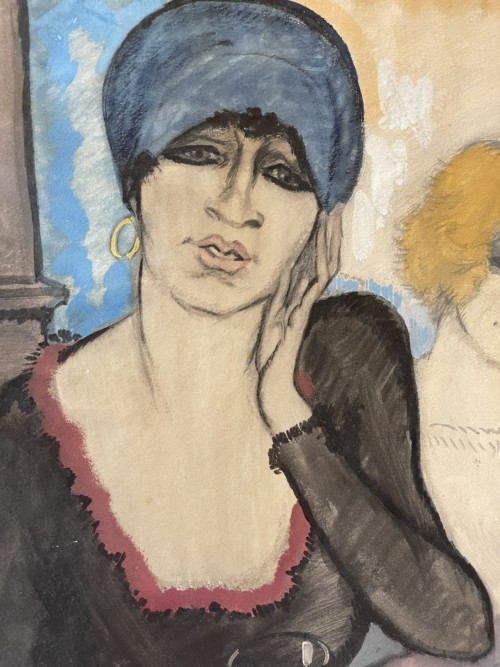
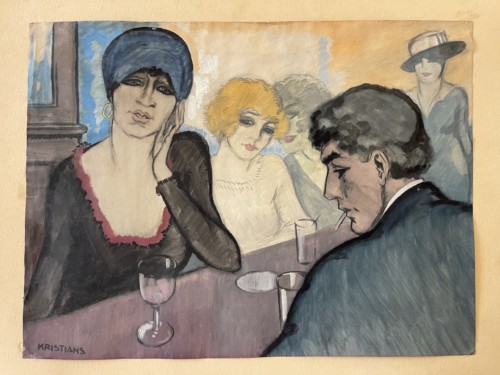
- Gouache sur papier.
- Signée en bas à gauche.
- Vers 1920.
H : 67 cm L : 87 cm (avec cadre)
Pour plus d’informations sur le créateur, cliquer sur son nom : Antonius Johans Kristians _______________________________________________________________________- Gouache on paper.
- Signed at bottom left.
- Around 1920.
-
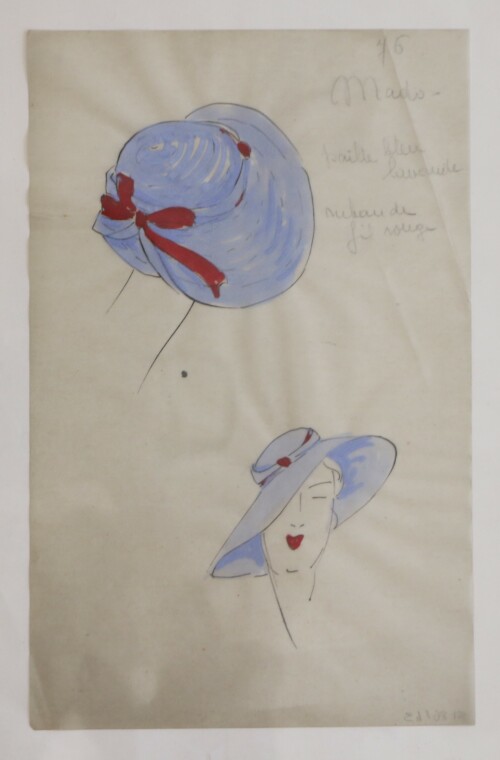
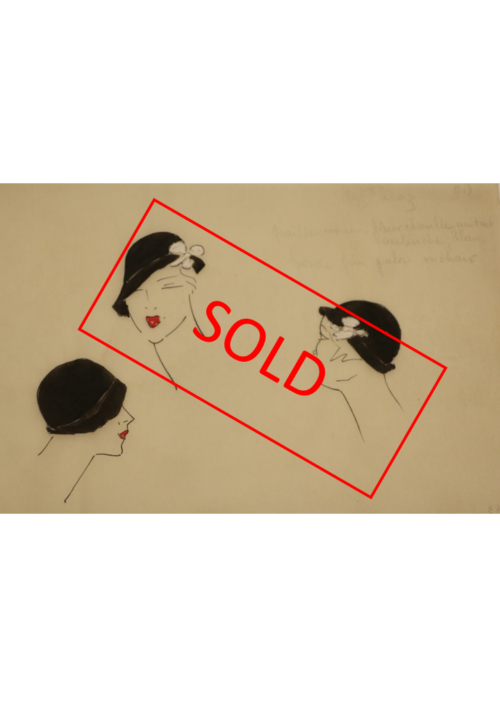 Atelier Léo TISSANDIE (XXe siècle) Projets de chapeaux à l'encre, gouache, aquarelle et traits de crayon sur papier calque Onze dessins techniques. Annotations du créateur Certaines planches portent le prénom du modèle Numéro de croquis en haut de la planche (de 74 à 87) Années 1920 H : 26 cm ; L : 17 cm Prix : Nous consulter
Atelier Léo TISSANDIE (XXe siècle) Projets de chapeaux à l'encre, gouache, aquarelle et traits de crayon sur papier calque Onze dessins techniques. Annotations du créateur Certaines planches portent le prénom du modèle Numéro de croquis en haut de la planche (de 74 à 87) Années 1920 H : 26 cm ; L : 17 cm Prix : Nous consulter
Fashion projects by the studio of Leo Tissandié, 1920s.Hat projects in ink, gouache, watercolour and pencil lines on tracing paper
Eleven drawings with annotations of the creator
Some drawings have the name of the model
Sketch number at the top of the tracing paper (74 to 87)
1920s.
Dimensions :H : 10.23 in. ; W : 6.69 in.H : 26 cm ; W : 17 cm -
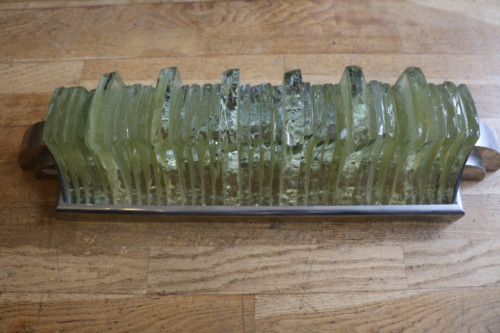
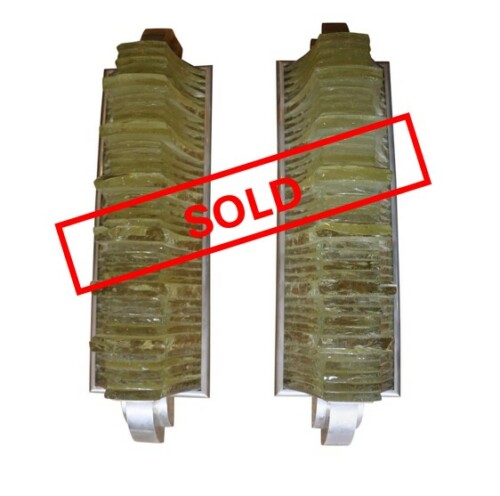 Jean Perzel (1892-1984) était un célèbre designer français de luminaires, né en Bavière. Après avoir été formé comme artiste verrier à Munich, il s’installe à Paris, où il se fait connaître pour ses élégants luminaires en verre et en bronze. En 1923, il établit son atelier et devient une figure clé du mouvement Art Déco, créant des designs pour des clients prestigieux comme la cour royale belge et Henry Ford. Son atelier est réputé pour son engagement envers l'artisanat, produisant des pièces telles qu'une lampe pivotante pour les étudiants et des dalles de verre incrustées de lumière. L'héritage familial se perpétue aujourd'hui sous la direction d'Olivier Raidt, le petit-neveu de Perzel, qui maintient la tradition d'un savoir-faire exceptionnel, reconnu par le label "Entreprise du Patrimoine Vivant".
Jean Perzel (1892-1984) était un célèbre designer français de luminaires, né en Bavière. Après avoir été formé comme artiste verrier à Munich, il s’installe à Paris, où il se fait connaître pour ses élégants luminaires en verre et en bronze. En 1923, il établit son atelier et devient une figure clé du mouvement Art Déco, créant des designs pour des clients prestigieux comme la cour royale belge et Henry Ford. Son atelier est réputé pour son engagement envers l'artisanat, produisant des pièces telles qu'une lampe pivotante pour les étudiants et des dalles de verre incrustées de lumière. L'héritage familial se perpétue aujourd'hui sous la direction d'Olivier Raidt, le petit-neveu de Perzel, qui maintient la tradition d'un savoir-faire exceptionnel, reconnu par le label "Entreprise du Patrimoine Vivant".- Métal nickelé et plaques de verre taillées au burin.
- Signées.
____________________________________________- Nickel-plated metal and chisel-cut glass plate.
- Signed.
-
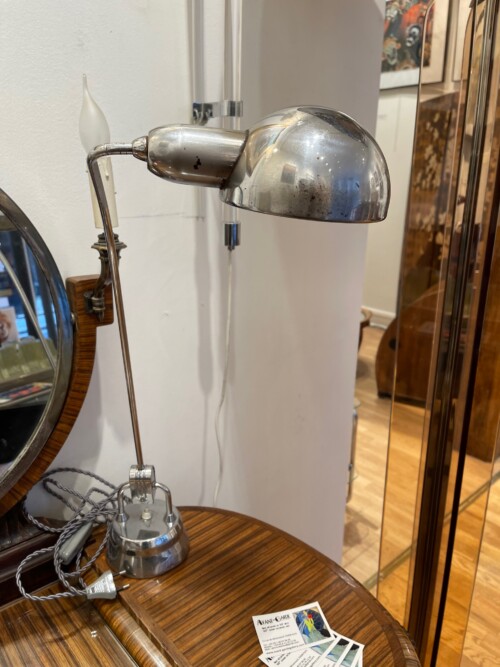
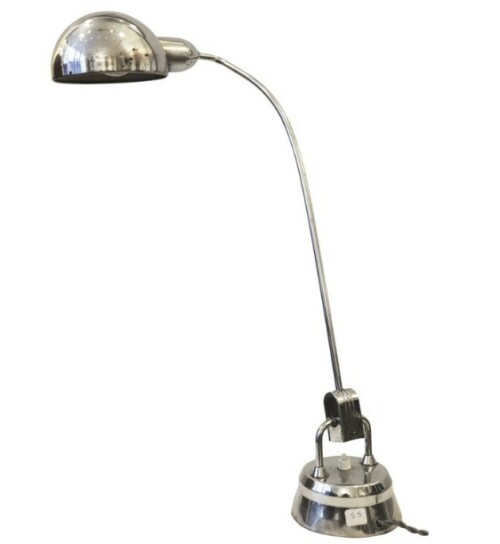
- Lampe de bureau.
- Modèle 600 en acier chromé.
- Editée par Jumo. Années 1950.
- Le réflecteur peut être orienté dans n'importe quelle direction.
Dimensions : H : 52 cm L : 13,5 cm P : 11 cm
Pour plus d'informations sur la créatrice, cliquer sur le nom : Charlotte PERRIAND
- Desk lamp.
- Model 600 in chromed steel.
- Edited by Jumo.
- Circa 1950.
- The reflector can be turned in any direction.
Dimensions : H : 20.47 in 5.3 in D : 4.33 in H : 52cm W : 13.5cm D : 11cm
For more information : Charlotte PERRIAND -
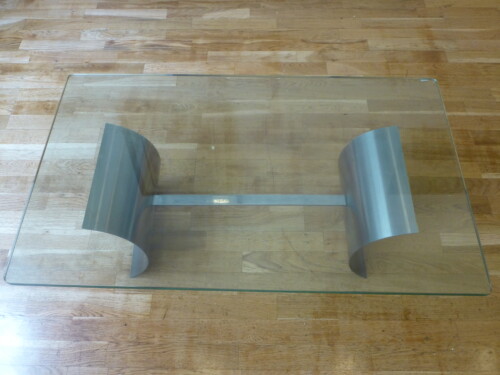
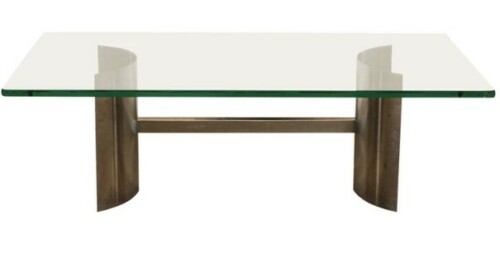 Attribuée à Françoise SEE Table basse rectangulaire Piètement en métal et plateau en verre H : 32 cm ; L : 100 cm ; P : 60 cm
Attribuée à Françoise SEE Table basse rectangulaire Piètement en métal et plateau en verre H : 32 cm ; L : 100 cm ; P : 60 cm
Coffee table attributed to Francoise See, 1970s.
Rectangular coffee table with a stainless steel base and a thick glass top.
The base is formed of two curved steel blades joined by a spacer.
Attributed to Francoise See - French 1970's designer.
Dimensions :H : 12.6 in. ; W : 39.37 in. ; D : 23.62 in.H : 32 cm ; W : 100 cm ; D : 60 cm -
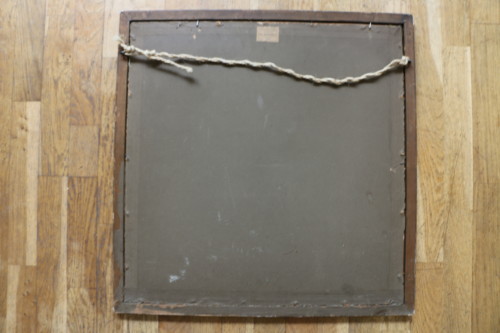
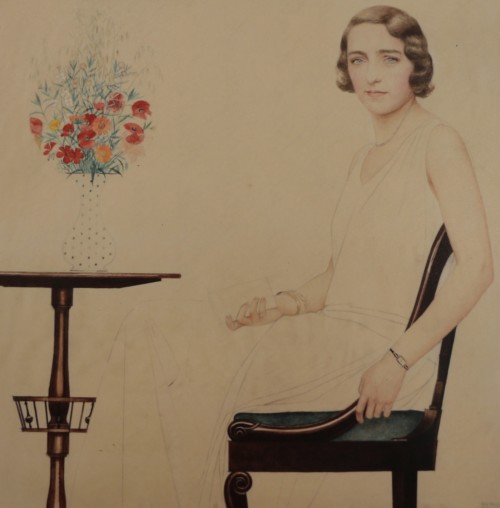 Bernard Boutet de Monvel était un peintre, sculpteur, graveur, illustrateur de mode et décorateur d'intérieur français. Bien qu'il soit d'abord connu pour ses gravures, il a gagné en notoriété pour ses peintures, en particulier ses vues hautement géométriques de New-York. En Europe et aux États-Unis, où il voyageait souvent, il est également devenu connu en tant que peintre de portraits pour des clients de la haute société.
Bernard Boutet de Monvel était un peintre, sculpteur, graveur, illustrateur de mode et décorateur d'intérieur français. Bien qu'il soit d'abord connu pour ses gravures, il a gagné en notoriété pour ses peintures, en particulier ses vues hautement géométriques de New-York. En Europe et aux États-Unis, où il voyageait souvent, il est également devenu connu en tant que peintre de portraits pour des clients de la haute société.- Aquarelle et crayon noir sur papier épais.
- Signé en bas à droite.
- Le tableau est le portrait de Mme Lise Brissaud dont la famille est décrite dans le certificat.
- Accompagné d'un certificat de Stéphane-Jacques Addade (expert à la Chambre Européenne des Experts d'Art).
Bernard Boutet de Monvel was a French painter, sculptor, engraver, fashion illustrator and interior decorator. Although first known for his etchings, he earned notability for his paintings, especially his higly geometric views of New-York. In both Europe and the United States, where he often traveled, he also became known as a portrait painter for high society clients.- Watercolor and black pencil on thick paper.
- Signed bottom right.
- The painting is the portrait of Ms Lise Brissaud whose family is described in the certificate.
- Accompanied by a certificate from Stéphane-Jacques Addade (expert at Chambre Européenne des Experts d'Art).